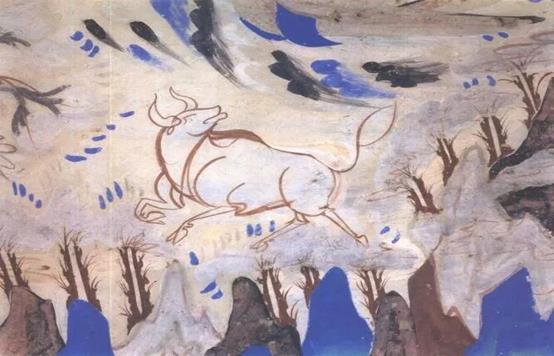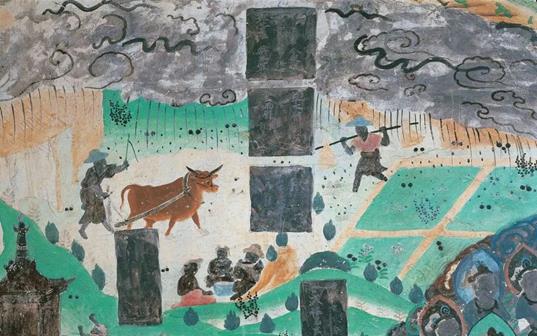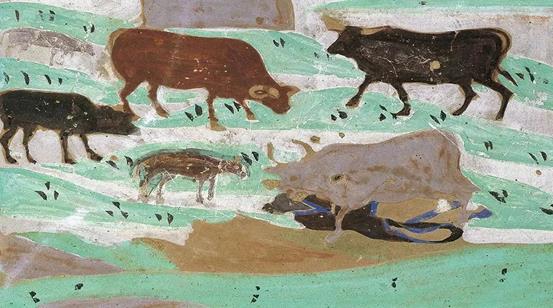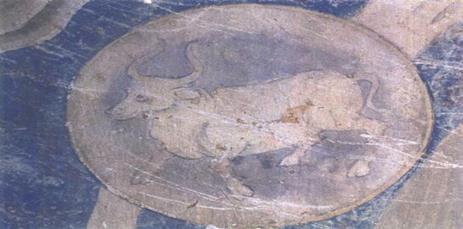
(Photos: Dunhuang Academy)
This most representative hunting picture in China’s Mogao Grottoes was painted in the Western Wei Dynasty more than 1,400 years ago. Compared with the proficiency of the murals in the Tang Dynasty, the earlier murals are more imaginative and original in beauty.
Some Western researchers believe that this mural has similarities with 19th-century impressionist paintings which emphasize creating an overall atmosphere rather than details.

This picture of farming in the rain in Cave 23 of the Mogao Grottoes depicts farming life in the Tang Dynasty.
According to Yang Xiuqing, a research librarian of the Dunhuang Academy, there are many pictures of oxen in the Dunhuang murals. Ancient painters used extensive sources from nature, daily life, and Buddhist stories to create various images of oxen.

This mural in Cave 148 portrays a Buddhist story of the Ox-King saving a prince.
Astrology and divination are ways that ancient humans understood the world. “China has twenty-eight stars and the West created zodiac signs. The zodiac was introduced to China in the Tang Dynasty. This mural is an illustration of cultural exchange between the East and the West,” said Yang.

The oxen in the Dunhuang murals also reveal an exotic style. Taurus can be found in the corridor of Cave 61 of Mogao Grottoes, where the Western Zodiac is painted.
Yang also mentioned that Dunhuang is located at the intersection of diverse civilizations. The pictures of oxen reflect the innovative and eclectic characteristics of Dunhuang culture, which are also keys for today’s creative transformation and innovative development of Chinese traditional culture.
(Compiled by Liao Yuecen)


